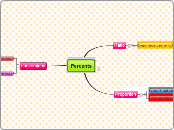MTE 280 Investigative Quantity
Fractions
Fraction Concepts
Fraction concepts
Area Model, Liner Model, Set Model- 3 ways to do problems with fractions.
In ordrer to solve a problem with fractions you must change the denominatiors to be the same and convert. (Show the old fraction in the new fraction diogram) ex;1/2=2/4 or( 1/4+1/2=1/4+2/4)
Addition adding the numerators togather, mixed numbers may be formed that is a whole number and a fraction
subtraction-subtracting the numerators.
Division how many of one fraction can go into the other fraction, liner model is most likely the model you will use for this one if it is complicated.
Multiplication- area model and set model are the most useful for this type of problem, taking one numerator and multiplying it by another numerator.
DENOMANATORS WILL MOST LIKELY BE THE SAME DUE TO CONVERTING.
Equivilent fractions
Models- Liniar (number line), Area-(uses shapes), Set-(uses certian number or circles or other shapes to show the relationship)
Mixed numbers- must be shown in the same way just representing more than 1. Also can be shown as a improper fraction.
Whole Number Opperations
Number Theory
Fact Family
Factor- any number being multiplied
inverse opperation- an opposite opperation that undoes another opperation.
3/5/15
3*5=15
5*3=15
15/3=5
15/5=3
Algorithms
triditional standard- 48+33=81
open number line- <0---4---8---12->
decomposition- 48+33 --> 51+30=81
number blocks base 10- lll ...+llll........=81
compensation-48+33 48 is close to 50 50+33=83, 83-2=81
partial sum- add the sum of the tens place add the sum of the ones place= partial sum
expanded notation= 40+30
8+3
80+1=81
Triditional-taught in us
alternate- taught in other countries besides the US
Repeated Subtraction- for division breaking the dividand into smaller numbers that can be easily done in your head, to find the answer add up all of the smaller numbers answers.
standard division- divison done as taught in US classrooms (bring down method)
Models
Addition:
set model- combining two types of discrete objects.
liner model-combinging two continuious quantities using numberlines and arrows to show change.
Subtraction:
take away- starting with a specified ammount then removing some from that specified ammount.
missing addend- there is a need for an addand to reach the target ammount.
compairison- compairing two sizes and determining a larger or smaller one of the sizes.
Liniar- numberline using arrows to show change.
Multiplication-
repeated addition set- repeadly adding a number of objects a number of times.
repeated addition liniar- repeadely adding a quantity of continuious quantities.
area model- product of 2 numbers repersenting a rectangular region, the product represents the individual units.
Properties
Addition:
Closure property of addition: add 2 whole numbers and the sum will also be a whole number.
Communitive Property: when adding, changing the order of the addands will be the same sum.
Associative property: when adding 3 or more numbers the order of the grouping will not change the sum.
Identy property: when you add zero to any number the result will be the same (ex: 5+0=5)
Subtraction:
Subtraction has no properties that work for it, it is the inverse opperation of addition however.
Multiplication: Built off of Addition
All properties that work for addition work with multiplication.
Distributive property of multiplication over additon/subtraction: 3(10-2)= (3*10)-(3*2)
Division:
none of the properties work for division because it is built off of subtraction.
Decimals
Decimal Concepts
Addition- adding the pieces of a whole togather, ex: .25+.25=.50
Subtraction-taking away pieces of a numericl value ex: .35-.25=.10
Multiplication- 2 different types decimals by decimals and decimals by whole number ex- whole: 4*.25=1, decimal: .25*.25
Integers
Opperations
share commonalities with wlhole number opperations, except now we can go into the negative.
Addition-ex; 5+(-2)=3
Subtraction- ex;4-5=-1/ -4-(-1)=-3
multiplication- ex;4(-4)=-16 / (-4)(-4)=16
division- ex;6/(-2)=-3
Concepts
Chip Method- using circles to represent positive and negative values. Empty/unshaded circles represent positive values, and shaded circles represent negative values.
Number line Approach- using a number line to represent absolute value using distance from zero for both a positive or negative number.
Absolute value-Distance from an intager to zero negative or positive.
"Numeration Systems"
Bases
Base 10- Hindu-Arabic based uses 0,1,2,3,4,5,6,7,8,9 ten total digits
base 5- uses digits 0,1,2,3,4 with five total digits and counts like 1,2,3,4,10,11,12,13,14...etc.
Base 12-0,1,2,3,4,5,6,7,8,9,X,E, 10
different symbols are inserted for those past 10.
Different Systems
There are many different types of Numeration Systems like, Mayan, Roman, Tally and Hindu-Arabic.
The Mayan uses symbols like= to represent ten, and other numbers.
The tally system uses lines (l)'s to create sets of 4 once you reach 5 you put a / through all four l's you have. It is used best when counting by ones or fives.
The Roman system uses a system similar to both the Mayan and Tally the symbols usesd are very similar to them however the l symbol can mean one, one before, and one after.
Finally the Hindu-Arabic system is the one most cultures use today using the symbols 1-9 in different orders with a variety of places to effectively have very large numbers that make sense to everyone because this is the system most of the world uses.









